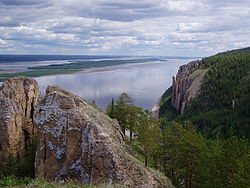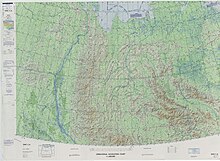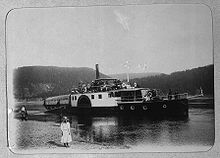
Sakha, officially the Republic of Sakha (Yakutia), is the largest republic of Russia, located in the Russian Far East, along the Arctic Ocean, with a population of one million. Sakha comprises half of the area of its governing Far Eastern Federal District, and is the world's largest country subdivision, covering over 3,083,523 square kilometers (1,190,555 sq mi). Yakutsk, which is the world's coldest major city, is its capital and largest city.

The Laptev Sea is a marginal sea of the Arctic Ocean. It is located between the northern coast of Siberia, the Taimyr Peninsula, Severnaya Zemlya and the New Siberian Islands. Its northern boundary passes from the Arctic Cape to a point with co-ordinates of 79°N and 139°E, and ends at the Anisiy Cape. The Kara Sea lies to the west, the East Siberian Sea to the east.
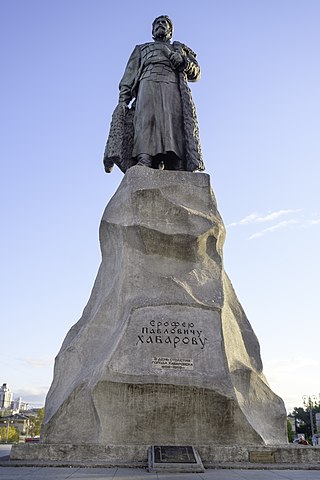
Yerofey Pavlovich Khabarov-Svyatitsky, was a Russian entrepreneur and adventurer, best known for his exploring the Amur river region and his attempts to colonize the area for Russia. For background, see Russian–Manchu border conflicts.

The Yana is a river in Sakha in Russia, located between the Lena to the west and the Indigirka to the east.

The Vilyuy is a river in Russia, the longest tributary of the Lena. About 2,650 kilometres (1,650 mi) long, it flows mostly within the Sakha Republic. Its basin covers about 454,000 square kilometres (175,000 sq mi).

The Olyokma is a tributary of the Lena in eastern Siberia.

The Vitim is a major tributary of the Lena. Its source is east of Lake Baikal, at the confluence of rivers Vitimkan from the west and China from the east. The Vitim flows first south, bends eastwards and then northward in the Vitim Plateau. Then it flows north through the Stanovoy Highlands and the town of Bodaybo. Including river Vitimkan, its western source, it is 1,978 kilometres (1,229 mi) long, and has a drainage basin of 225,000 square kilometres (87,000 sq mi).
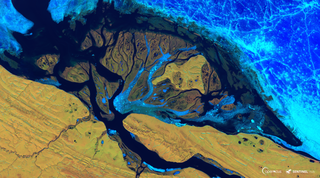
The Olenyok is a major river in northern Siberian Russia, west of the lower Lena and east of the Anabar. It is 2,292 kilometres (1,424 mi) long, of which around 1,000 kilometres (620 mi) is navigable. Average water discharge is 1,210 cubic metres per second (43,000 cu ft/s).
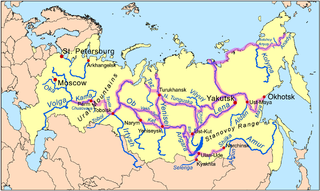
Siberian River Routes were the main ways of communication in Russian Siberia before the 1730s, when roads began to be built. The rivers were also of primary importance in the process of Russian conquest and exploration of vast Siberian territories eastwards. Since the three great Siberian rivers, the Ob, the Yenisey, and the Lena all flow into the Arctic Ocean, the aim was to find parts or branches of these rivers that flow approximately east-west and find short portages between them. Since Siberia is relatively flat, portages were usually short. Despite resistance from the Siberian tribes, Russian Cossacks were able to expand from the Urals to the Pacific in only 57 years (1582-1639). These river routes were crucial in the first years of the Siberian fur trade as the furs were easier to transport over water than land. The rivers connected the major fur gathering centers and provided for relatively quick transport between them.
Demid Sofonovich Pyanda or, according to some sources, Panteley Demidovich Pyanda, also spelled Penda (Пенда) was among the first and most important Russian explorers of Siberia. According to few historical documents and later reconstructions based on them, Pyanda, in 1620–1623, while leading a party which was hunting for Siberian furs and buying them from the locals, became the first known Russian to ascend the Lower Tunguska River and reach the proximity of the Lena, one of the world's greatest rivers. According to later legendary accounts, collected a century after his journey, Pyanda allegedly discovered the Lena River, explored much of its length, and via the Angara River returned to the Yenisey, whence he came.

The Kodar Mountains are a mountain range in the Transbaikal region of Siberia, Russia. The name Kodar is derived from "khada", an Evenki word for rock.

The Central Yakutian Lowland or Central Yakutian Lowlands, also known as Central Yakut Plain or Vilyuy Lowland, is a low alluvial plain in Siberia, Russia.

The South Siberian Mountains are one of the largest mountain systems of the Russian Federation. The total area of the system of mountain ranges is more than 1.5 million km². The South Siberian Mountains are located in the Siberian and Far Eastern Federal Districts of Russia, as well as partly in Mongolia. The territory of the mountain system is one of the Great Russian Regions.

The Patom Highlands are a mountainous area in Eastern Siberia, Russia. Administratively most of the territory of the uplands is part of Irkutsk Oblast, with a smaller section in northern Zabaykalsky Krai.
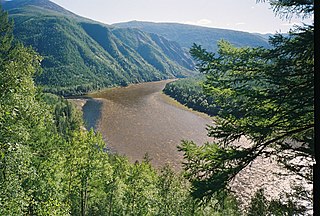
The Kalar Range is a mountain range in Zabaykalsky Krai and the NW end of Amur Oblast, Russian Federation. The highest point of the range is 2,520 m (8,270 ft) high Skalisty Golets.
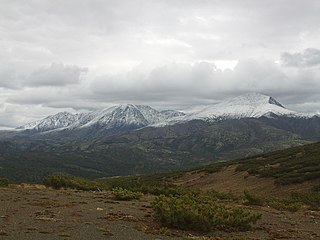
The North Baikal Highlands are a mountainous area in Eastern Siberia, Russia. Administratively the territory of the uplands is part of Buryatia and Irkutsk Oblast.
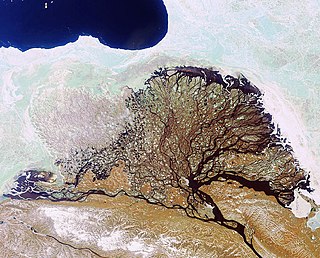
The Chekanovsky Ridge is a range of mountains in the Bulunsky District, Yakutia, Russian Federation. The area of the range is uninhabited.
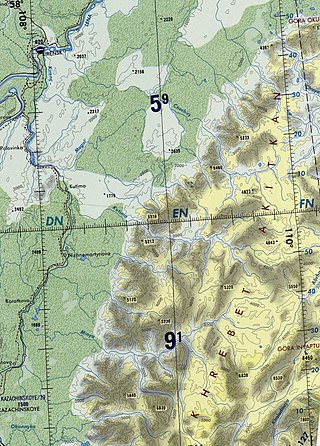
The Akitkan Range is a mountain range in Irkutsk Oblast and Buryatia, Russian Federation.
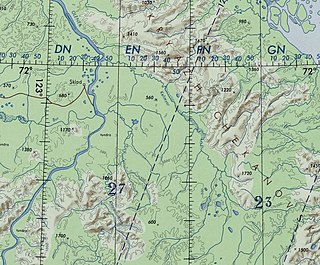
The Kelimyar is a river in Yakutia, Russia. It is a tributary of the Olenyok with a length of 254 kilometres (158 mi) and a drainage basin area of 4,050 square kilometres (1,560 sq mi).
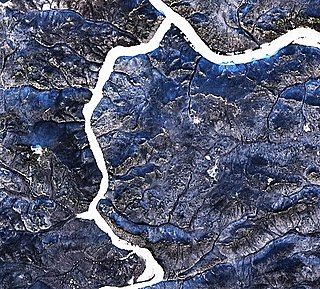
The Chirkuo is a river in Yakutia, Russia. It is a right hand tributary of the Vilyuy, and is 118 kilometres (73 mi) long —206 kilometres (128 mi) including the Duikhta at its head, with a drainage basin of 7,710 square kilometres (2,980 sq mi).
